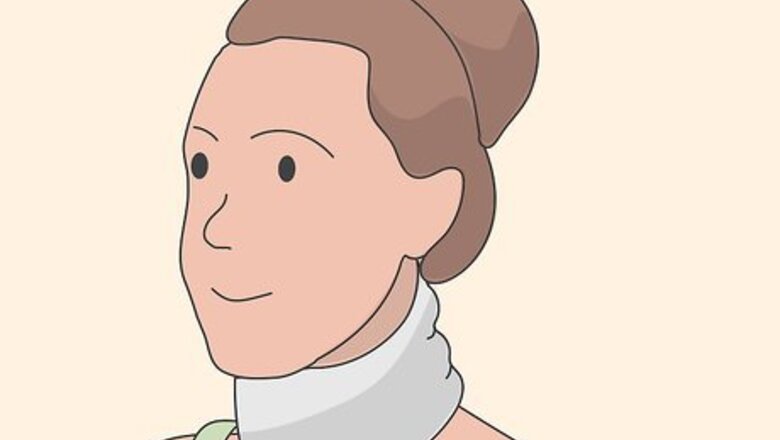
views
X
Research source
In the first few days after getting a sprain, take it easy and use cold, heat, and over-the-counter medications to manage your pain. To encourage healing and prevent future strains, do stretches and exercises to limber up and strengthen your muscles.
Managing Immediate Symptoms

Rest your neck for 1-2 days after the injury. If you’ve strained your neck, it’s important to give it a couple days to heal. Avoid doing activities that cause your pain to get worse or put additional stress on the muscles and tendons in your neck. During the first couple of days after your neck injury, it’s okay to use a neck support collar for a few hours at a time to help rest the muscles and get relief. However, don’t use the collar continuously or for more than a few days, since this could weaken your neck muscles.

Use ice to reduce swelling during the first 48 hours. Put an ice pack or a bag of frozen peas against your neck for 10-20 minutes at a time to relieve pain and inflammation. You can safely do this 8-10 times in a 24-hour period. Take rests between applications and wrap the ice pack in a towel before applying it to avoid damaging your skin. Talk to your doctor before using an ice pack if you have certain medical conditions, such as rheumatoid arthritis or Reynaud’s syndrome. These conditions can cause your blood vessels to become blocked or constricted when exposed to cold. Be cautious if you have any numbness around the injured area, since you may not notice if the cold is hurting your skin.

Apply heat after 48 hours to improve circulation. Once the initial inflammation has gone down, heat therapy can help relieve pain and improve blood flow to the injured muscle or tendon. Use a heating pad, hot water bottle, or heat wrap to warm the muscles of your neck for 10-20 minutes at a time with breaks of about 30 minutes in between. You might do this 8-10 times during the course of a day. To reduce your risk of burns, don’t sleep with an electric heating pad on your neck. Some people get the most relief from alternating heat and cold therapy. Talk to your doctor before using heat therapy if you have medical conditions such as dermatitis, diabetes, or conditions that affect your blood flow, such as peripheral vascular disease.
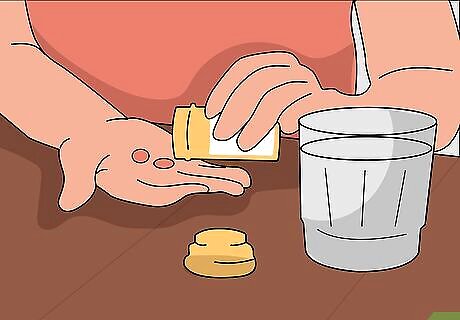
Take NSAIDs to relieve pain and inflammation. If your pain is mild to moderate, you can get additional relief by using over-the-counter NSAIDs (non-steroidal anti-inflammatory drugs), such as ibuprofen (Motrin, Advil), naproxen (Aleve), or aspirin. These medications can help reduce swelling and inflammation in addition to relieving pain.Warning: Don’t use NSAIDs if you are pregnant, since they may cause problems for you or your baby. Similarly, don't use NSAIDs if you have kidney problems or for longer than 7 days. Additionally, don’t use aspirin if you are under 18, since it can cause a rare but life-threatening condition in children and teens called Reye’s syndrome. You can also use acetaminophen (Tylenol) to treat your pain, although it doesn’t have anti-inflammatory properties. If your strain is causing severe pain or muscle spasms, your doctor may prescribe a stronger pain medication or a muscle relaxant.

Try a massage to loosen tense muscles and promote healing. Try gently massaging your own neck with your hands or a massage tool, or visit a massage therapist for a professional neck massage. Massage can not only help relieve pain from a neck strain, but can also improve circulation to the injured muscles. You can get a neck massage from a massage therapist, physical therapist, or chiropractor.
Preventing Future Strains
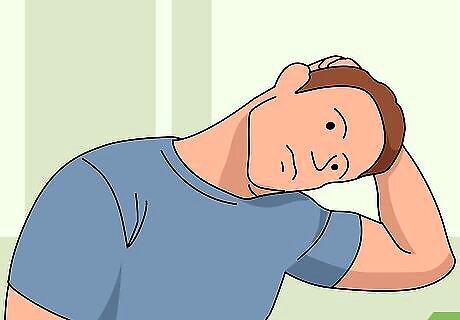
Do gentle neck stretches to improve your range of motion. Neck stretches and range of motion exercises can both relieve pain and decrease your chances of getting more strains in the future. Ask your doctor or physical therapist about performing stretches and exercises such as:Warning: You may feel a little discomfort during these stretches, but they shouldn’t hurt. If you experience pain while stretching your neck, stop and talk to a doctor or physical therapist before you continue. Chin tucks. Sit up straight with your shoulders back and your chin level, then pull your head and neck up and back as if someone were pulling the top of your head with a string. Neck flexion. Slowly tilt your chin down toward your chest and then return to the starting position. Side bends. Look straight ahead and slowly tilt your head from one side to the other, toward each shoulder. Neck rotations. Slowly turn your head from side to side to look in both directions. Try to turn your head far enough to look back slightly over each shoulder.
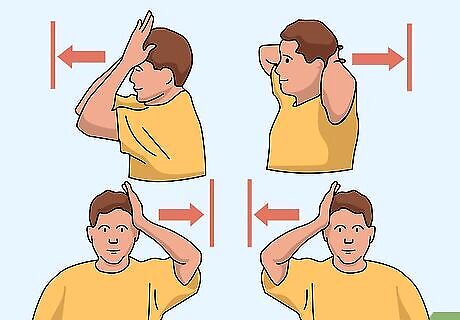
Strengthen your neck with isometric exercises. Isometric exercises help build strength in your muscles by creating resistance. Place your hand on your head at different points and apply gentle pressure with your fingers while you push back against it with your neck muscles. Ask your doctor or therapist how often to perform these exercises. Try the following exercises: Isometric flexion. Gently push back on your forehead with your fingers while resisting with your neck muscles to keep your head upright. Isometric extension. Push lightly against the back of your head with your hand while pushing back with your neck muscles to keep your head from tipping forward. Isometric sidebends. Press your fingers above your ear on each side and use your neck muscles to keep your head from bending sideways. Isometric rotations. Try to keep your head from turning while you gently press on either side of your forehead.

Perform regular cardio exercises to improve blood flow. To improve circulation in your upper body and prevent future muscle strains, try to spend a little time each day doing activities that get your blood pumping. Some good cardio exercises include walking, jogging, biking, or using a treadmill or elliptical machine. You can target your upper body during your cardio workout by using an upper-body ergometer or arm bike. Cardio exercise has the added benefit of releasing endorphins, which are natural feel-good chemicals in your body that help boost your mood and reduce pain. If you’re not used to doing cardio, work up to it slowly. For example, you might start by doing a light 10-15 minute walk every day, then work up to longer and more intense workouts, such as a 30-minute run.
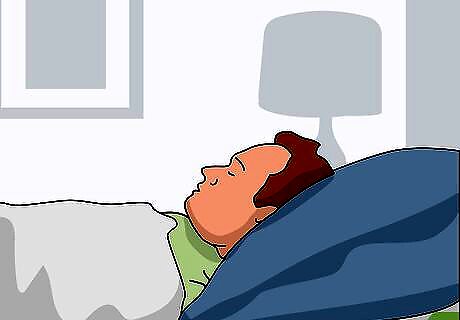
Choose a supportive pillow. A pillow that’s too firm or that raises your neck up too much while you sleep can put extra strain on your neck. Try using a cervical pillow (a pillow with a notch for your neck) or experiment with different pillows until you find one that feels comfortable to you. Some people also find that sleeping without a pillow on a firm mattress can bring relief from stiff or sore neck muscles. Experiment with different sleeping positions, too. Sleeping on your stomach can put stress on your neck, so try sleeping on your back or side.
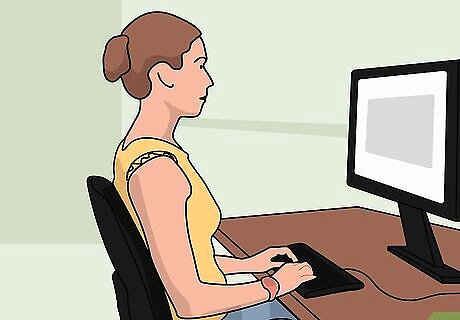
Improve your posture to reduce strain on your muscles. It’s easy to get into the habit of slouching, especially if you spend a lot of time in front of a computer, smart phone, or tablet. Make an effort to keep your neck upright and your shoulders back throughout the day to strengthen the muscles in the area and minimize strain. If you spend a lot of time working on a computer, elevate your monitor or tilt it up slightly so that you have to look straight ahead to see it.
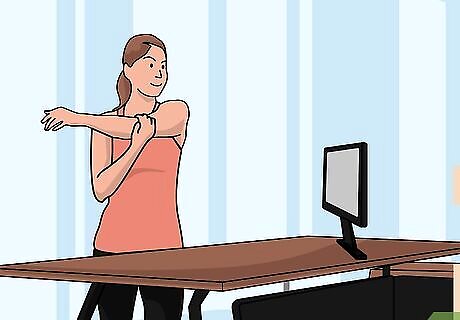
Take regular breaks to stand up and stretch. Tension and staying in the same position for too long can cause tightness in your neck. This may increase your risk of another neck strain. Schedule regular breaks into your day so you can relax and loosen your muscles. Stand up, walk around, and stretch to help prevent future neck strains. For instance, you might take a 10-minute break every hour.
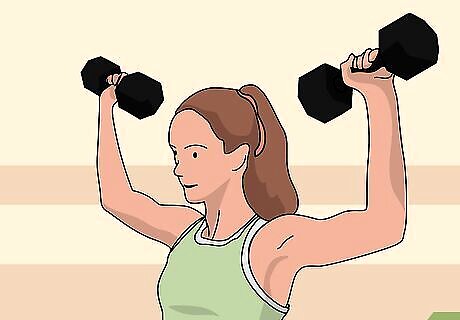
Work up to new physical activities slowly. Neck strain can happen when you overuse your neck muscles while doing activities you aren’t used to, such as lifting heavy weights or doing new sports. If you’re trying out a new workout or making other changes to your physical activity level, take it slow so that you don’t injure yourself. For example, if you’ve just started lifting weights, start with smaller amounts of weight and gradually work your way up. Repetitive motions can also cause neck strain, so make sure to take rests or alternate between activities so that your neck muscles have time to recover.
Seeking Medical Attention
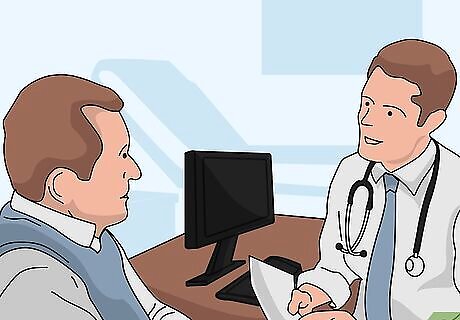
Make an appointment for radiating pain or numbness. If you have neck pain that radiates into your head or arms, or if you experience numbness or tingling in your neck, shoulders, or arms, then you may have a nerve injury. Call your doctor to make an appointment if you have any of these symptoms, especially if you have shooting pain in both arms or hands. Describe all the symptoms you are experiencing and let your doctor know when they started.
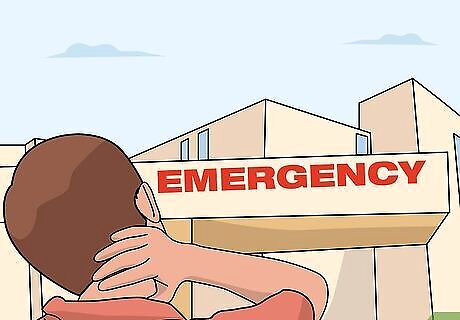
Get immediate care for neck pain after a traumatic injury. If you have severe neck pain that started after a trauma, such as a car crash, fall, or diving accident, go to the nearest emergency room. It’s important to get evaluated immediately to make sure there is no serious damage to your spine.Warning: Don’t try to drive yourself to the emergency room if you have severe neck pain after a trauma. Call for an ambulance or ask someone else to drive you. Untreated spinal injuries can cause permanent paralysis.

Seek emergency care if you have a high fever or muscle weakness. If you have severe neck pain along with a high fever, muscle weakness, and fatigue, call emergency services or go to the nearest emergency room immediately. These can be symptoms of a serious condition, such as meningitis. Meningitis may also cause nausea and vomiting and severe neck stiffness.

See your doctor if your pain doesn’t improve with self-care. Most neck strains should heal up within a few days, especially with rest and proper care. If your pain gets worse or if it doesn’t improve after a few weeks with home treatment, call your doctor. Your doctor may examine you or do imaging tests, such as x-rays or an MRI, to find out what’s causing your pain.
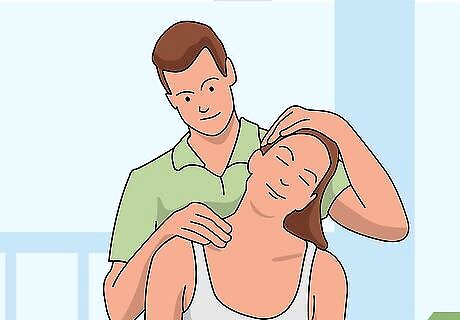
Visit a physical therapist or chiropractor for persistent pain. If you have lingering pain or muscle spasms from a neck strain, ask your doctor to recommend a physical therapist or chiropractor who has experience treating neck injuries. They can recommend exercises to relieve pain and strengthen your neck muscles, or do manual adjustments to improve the alignment of your joints and muscles. You may need physical therapy if you have neck strain from a traumatic injury (such as whiplash) or if your neck pain persists for a few weeks or longer. Some people also find that acupuncture is helpful for relieving persistent neck pain.




















Comments
0 comment